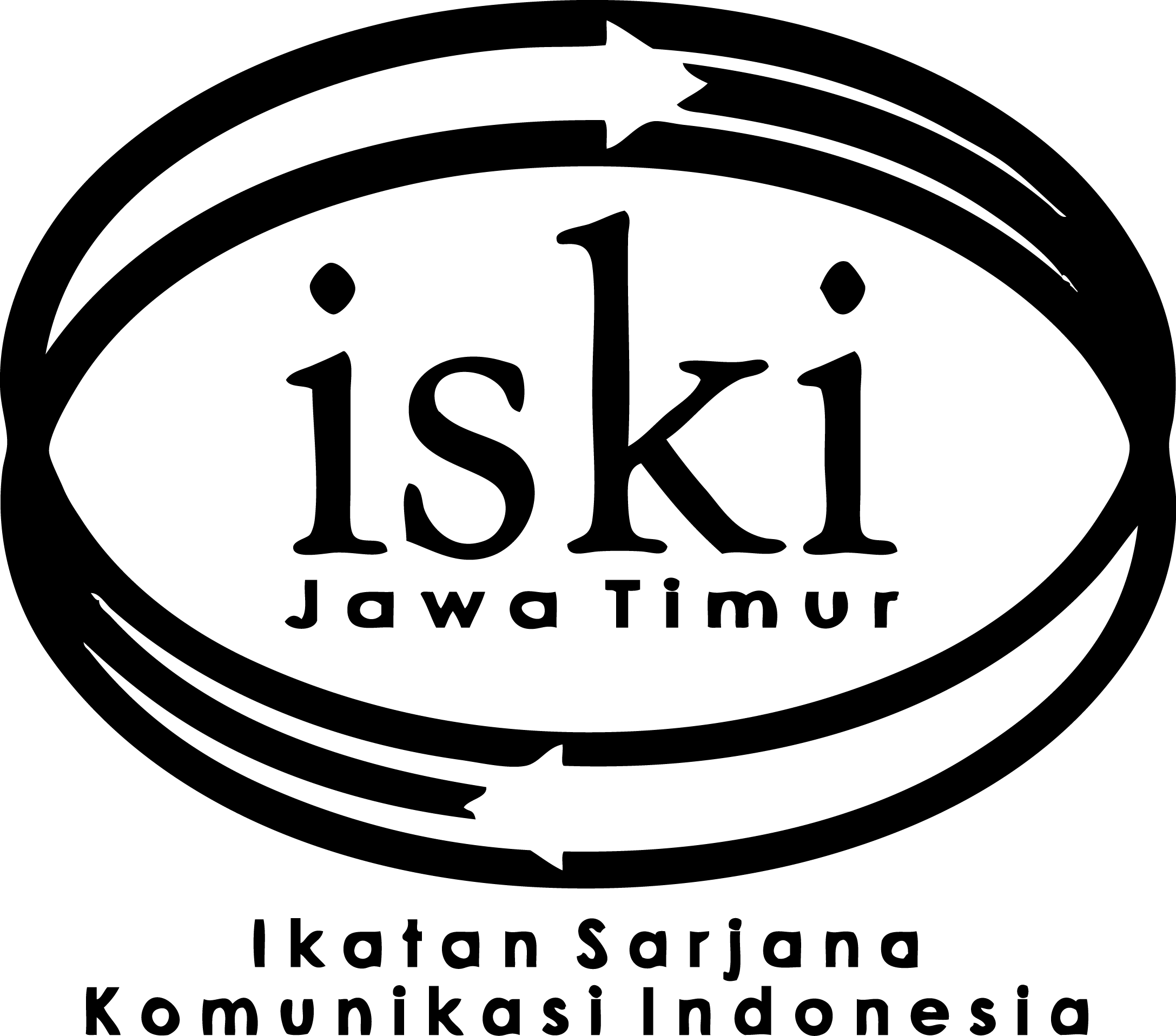The Meaning of Toxic Relationship Communication for Teenagers
DOI:
https://doi.org/10.37826/spektrum.v12i2.705Keywords:
Depression, Meaning, Narsistic, Romantic Relationship, Toxic RelationshipAbstract
This research is motivated by the phenomenon of the rise of toxic relationships in romantic relationships among teenagers. This results in depression, suicide attempts due to excessive pressure from the perpetrator. Komnas Perempuan's annual records for 2022 contain 3,528 data on cases of violence in romantic relationships. The aim of this research is to explain the motives, experiences and meaning of toxic relationship communication in romantic relationships for teenagers in Garut Regency. The research method used is a descriptive method with a qualitative approach. Phenomenological theory becomes the scalpel in this research to obtain an explanation for the phenomenon of toxic relationships. Data collection techniques through participant observation, in-depth interviews, literature study and documentation. The data analysis techniques in this research are data reduction, data presentation and drawing conclusions. The research results show that the motives for toxic relationships in romantic relationships vary, starting from internal factors such as obsession, narcissistic personality disorder (NPD), excessive disclosure and external factors such as the surrounding environment and the presence of an ex-lover in a new relationship. The experiences of toxic relationships that many people experience are verbal and nonverbal violence, mild depression to severe depression, trauma, hampered personal development and loss of confidence in having new relationships with other people. The communication meaning of a toxic relationship is one-way communication, a relationship that hurts each other, does not have good expectations from the romantic relationship that is being carried out and the relationship is dominated by only one party.
References
Agustina, A., Appulembang, Y. A., Dari, M., Rahmawati, E., Si, M., Maranatha, Y., Meutia, A., Psi, M., & Hanso, B. (2015). Kesehatan Mental dari Perspektif Kultural. Jurnal Muara Ilmu Sosial, Humaniora, Dan Seni, 4(1), 210.
Arifin, I. P., & Nurchayati. (2023). Self-Worth pada Perempuan yang Pernah Terlibat Toxic Relationship The Self-Worth of Women in Toxic Relationships. Jurnal Penelitian Psikologi, 10(02), 45–61.
Diananda, A. (2019). Psikologi Remaja dan Permasalahannya. Journal Istighna, 1(1), 116–133.
Fatmawaty, R. (2017). Memahami Psikologi Remaja. Jurnal Reforma, 2(1), 55–65. https://doi.org/10.30736/rfma.v6i2.33
Forth, A., Sezlik, S., Lee, S., Ritchie, M., Logan, J., & Ellingwood, H. (2022). Toxic Relationships: The Experiences and Effects of Psychopathy in Romantic Relationships. International Journal of Offender Therapy and Comparative Criminology, 66(15), 1627–1658. https://doi.org/10.1177/0306624X211049187
Georgetown Institute for Woman, P. and S. (2021). Woman, Peace and Security Index 2021/22.
Girsang, B. M., & Ningsih, N. (2015). Fenomena Toxic Relationship Dalam Pacaran Pada Mahasiswa Universitas Sriwijaya. Skripsi, 1–41.
Grace, S., Pratiwi, P. C., & Indrawati, G. (2018). Hubungan Antara Rasa Percaya Dalam Hubungan Romantis Dan Kekerasan Dalam Pacaran Pada Perempuan Dewasa Muda Di Jakarta. Jurnal Psikologi Ulayat, 5(2), 169–186.
Hidayat, Fahrul, D. (2023). Pemaknaan Cinta Pada Wanita Yang Mengalami Toxic Relationship. 31–41.
Hombing, H. B., & Sipahutar, C. A. (2022). Implementation of ‘Ruth and Naomi’ Interpersonal Communication as a Model in Avoiding Toxic Relationship. The International Journal of Social Science World, 4(1), 424–431.
Ismanto, Budi., Yusuf, Y., & Suherman, Asep. (2022). Membangun Kesadaran Moral Dan Etika Dalam Berinteraksi Di Era Digital Pada Remaja Karang Taruna Rw 07 Rempoa, Ciputat Timur. Jurnal Abdi Masyarakat Multidisiplin, 1(1), 43–48. https://doi.org/10.56127/jammu.v1i1.253
Indrawati, F., Sani, R., & Ariela, J. (2018). Hubungan Antara Harapan Dan Kualitas Hubungan Pada Dewasa Muda Yang Sedang Menjalani Hubungan Pacaran. Jurnal Psikologi Ulayat, 5(1), 72. https://doi.org/10.24854/jpu12018-98
Jailani, M., & Nurasiah, N. (2021). Fenomena Kekerasan dalam Berpacaran. Journal of Gender and Social Inclusion in Muslim Societies, 1(1), 49–67. https://doi.org/10.30829/jgsims.v1i1.6445
Julianto, V., Cahayani, R. A., Sukmawati, S., & Aji, E. S. R. (2020). Hubungan antara Harapan dan Harga Diri Terhadap Kebahagiaan pada Orang yang Mengalami Toxic Relationship dengan Kesehatan Psikologis. Jurnal Psikologi Integratif, 8(1), 103. https://doi.org/10.14421/jpsi.v8i1.2016
Komisi Nasional Perempuan. (2019). Korban Bersuara, Data Bicara: Sahkan RUU Penghapusan Kekerasan Seksual sebagai Wujud Komitmen Negara. Lembar Fakta Dan Poin Kunci Catatan Tahunan Komnas Perempuan Tahun 2019, 121. https://komnasperempuan.go.id/catatan-tahunan-detail/lembar-fakta-dan-poin-kunci-catatan-tahunan-komnas-perempuan-tahun-2019
Komisi Nasional Perempuan. (2022). Lembar Fakta Catatan Tahunan Komnas Perempuan Tahun 2023 Kekerasan terhadap Perempuan di Ranah Publik dan Negara: Minimnya Pelindungan dan Pemulihan.
Kuswarno, E. (2009). Fenomenologi. Bandung: Widya Padjajaran.
Mu’minin, A. (2020). Analisis Pola prilaku Pacaran Pada Remaja. Fisheries : Jurnal Perikanan dan Ilmu Kelautan, 2(2). https://doi.org/10.30649/fisheries.v2i2.43
Ni Luh Wiweka Widyastuti, Styawati, N. K. A., & Wirawan, K. A. (2022). Perlindungan Hukum terhadap Korban Toxic Relationship di Kalangan Remaja. Jurnal Konstruksi Hukum, 3(1), 166–171. https://doi.org/10.22225/jkh.3.1.4413.166-171
Nihayah, U., Pandu Winata, A. V., & Yulianti, T. (2021). Penerimaan Diri Korban Toxic Relationship dalam Menumbuhkan Kesehatan Mental. Ghaidan: Jurnal Bimbingan Konseling Islam Dan Kemasyarakatan, 5(2), 48–55. https://doi.org/10.19109/ghaidan.v5i2.10567
Praptiningsih, N. A., & Putra, G. K. (2021). Toxic Relationship Dalam Komunikasi Interpersonal Dikalangan Remaja. Jurnal Communication, 12(2), 132.
Praptiningsih, N. A., Mulyono, H., & Setiawan, B. (2024). Toxic Relationship In Youth Communication Through Self-Love Intervention Strategy. Online Journal of Communication and Media Technologies, 14(2), e202416. https://doi.org/10.30935/ojcmt/14292
Putra, D. A., Hayu, P., & Tyas, P. (2023). Fenomena Toxic Relationship dalam Berpacaran. Journal of Counselling and Personal Development, 5(1), 54–62. https://e-journal.usd.ac.id/index.php/solution/index
Rifayanti, R., Sofia, L., Purba, T. D. U., Amanda, S. P., & Merary, S. (2022). Phenomenological Studies: Adolescent Toxic Relationships. European Journal of Humanities and Social Sciences, 2(6), 23–29. https://doi.org/10.24018/ejsocial.2022.2.6.337
Sambhara, D. W., & Cahyanti, I. Y. (2013). Tahapan Pengambilan Keputusan untuk Meninggalkan Hubungan Pacaran dengan Kekerasan pada Perempuan Dewasa Awal Ditinjau dari Stages of Change. Jurnal Psikologi Klinis dan Kesehatan Mental, 02(02), 69–78.
Yani, D. I., Radde, H. A., & HZ, A. G. (2021). Analisis Perbedaan Komponen Cinta Berdasarkan Tingkat Toxic Relationship. Jurnal Psikologi Karakter, 1(1), 38–43. http://https//journal.unibos.ac.id/jpk38
Yanti, C.I., (2023). Toxic Relationship Pada Remaja Yang Berpacaran (Studi Fenomenologi pada Remaja Korban Toxic Relationship di Kota Bandar Lampung). Skripsi.
Zulfiana, E., Rahmanindar, N., & Hidayah, S. N. (2023). Phenomenological Study of Adolescent Perception of Toxic Relationships. The Southeast Asian Journal of Midwifery, 9(1), 69–74.
Downloads
Published
How to Cite
Issue
Section
License
Copyright (c) 2024 Jurnal Spektrum Komunikasi

This work is licensed under a Creative Commons Attribution-NonCommercial-ShareAlike 4.0 International License.
























